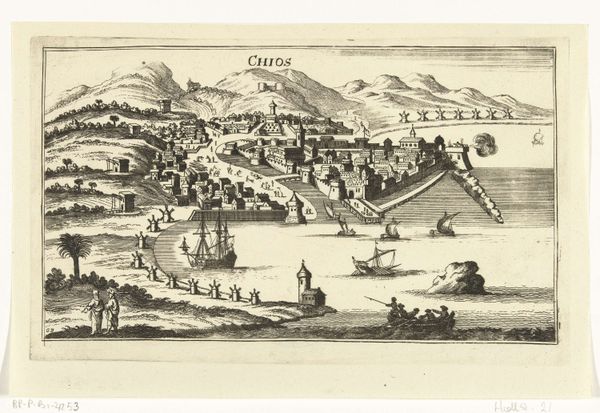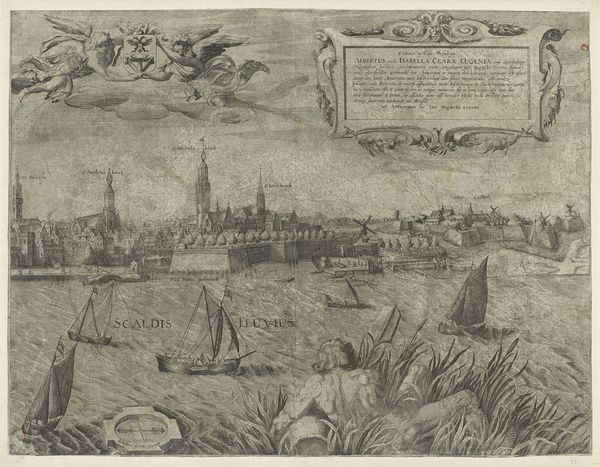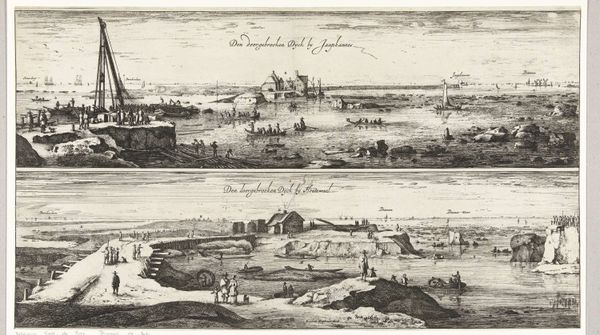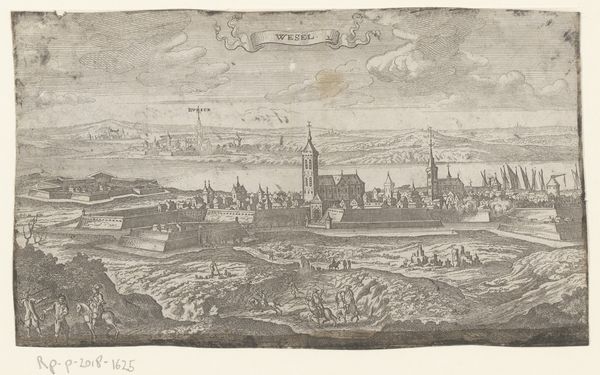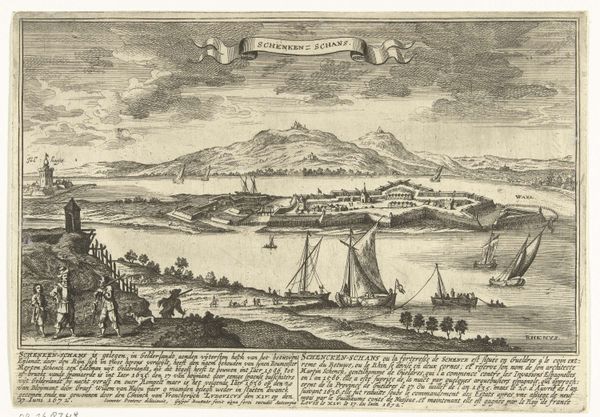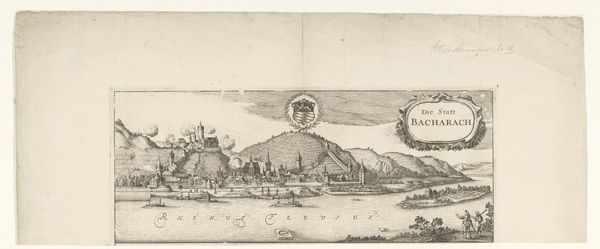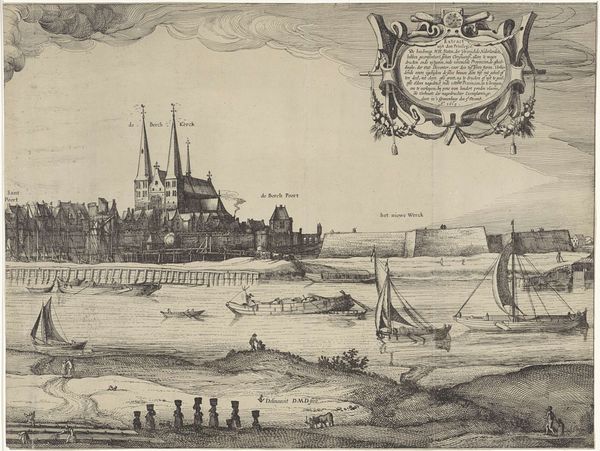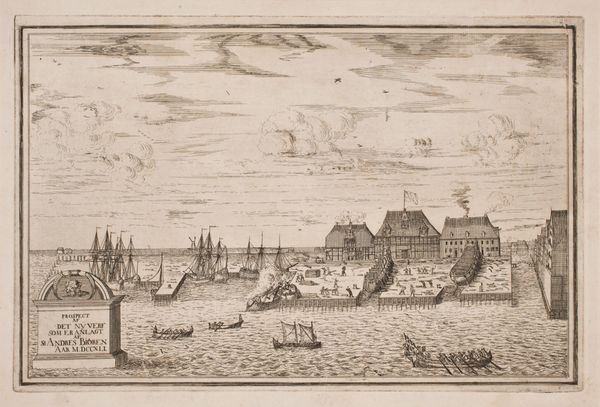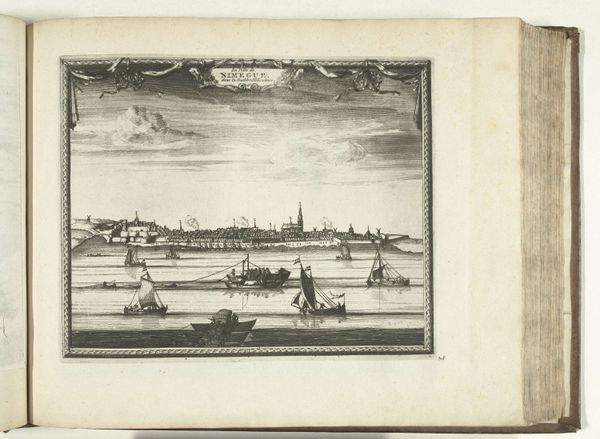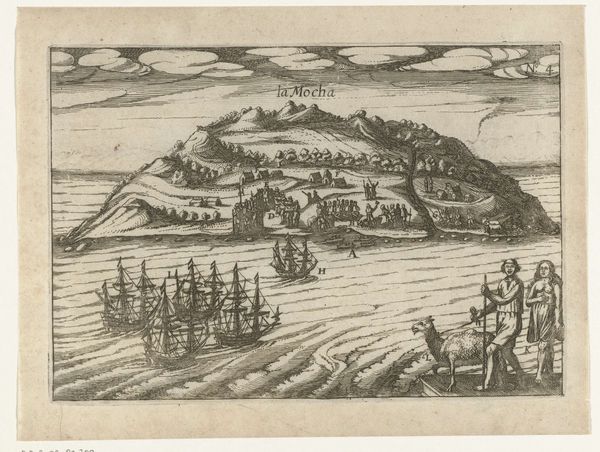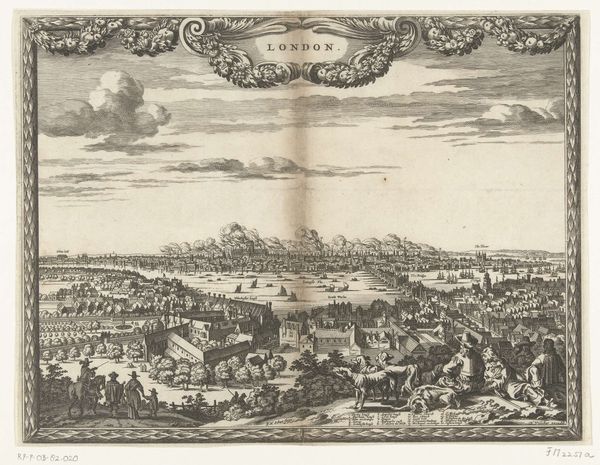
print, engraving
#
narrative-art
#
dutch-golden-age
# print
#
old engraving style
#
cityscape
#
history-painting
#
engraving
Dimensions: height 444 mm, width 562 mm
Copyright: Rijks Museum: Open Domain
Curator: Looking at this piece, the initial impact is one of chaos and destruction—a moment frozen in the midst of profound disruption. Editor: Indeed. We are looking at an engraving titled "Brandstichting door de Engelsen op West-Terschelling, 1666," depicting the English attack on West-Terschelling during that year. The artist, Harmen de Mayer, captures two moments: before and during the arson. Curator: Visually, the separation into before-and-after scenes highlights not just the event but also the *process* of destruction. Consider the physical act of making this engraving: the repetitive, careful lines needed to render smoke, flames, and the regimented housing—the sheer labor involved is considerable. How did its original viewers process it? Editor: It's crucial to remember this wasn’t just documentation; it's deeply embedded in the socio-political context. The engraving was likely intended to stoke nationalistic sentiment, depicting the English as aggressors and the Dutch as victims, reinforcing Dutch identity amid ongoing conflict. Consider the power dynamics implicit in who gets to represent this event and how. Curator: The material reproduction would've circulated it widely, shaping public opinion on the cheap. I'm thinking of the production of printed news, where similar broadsides also covered violent and turbulent news of the era. Its efficiency allowed the rapid dissemination of this charged depiction. Editor: Absolutely. The act of 'brandstichting' - arson - wasn’t merely a military tactic; it was a form of symbolic violence aimed at disrupting the social fabric. The flames represent not just the destruction of property but an assault on the Dutch sense of home and security, especially impacting marginalized communities. This act, as depicted, serves as an entry point into exploring themes of vulnerability, resilience, and national memory. Curator: I'm thinking too, about how each copy carries an index of the hand—each is unique from wear and use, and contributes to a cultural biography. Editor: In that respect, looking at it from an activist perspective allows us to acknowledge the layers of history, injustice, and representation that this work encapsulates, going far beyond just a visual record of the past. It’s a conversation starter. Curator: Exactly, viewing art as material with embedded context helps reveal history. Editor: Precisely. These works were not just historical documentation, but also evidence of violence and displacement, seen through a particular lens. They compel us to continuously analyze power structures, both within the historical narrative and in how the art is produced and consumed today.
Comments
No comments
Be the first to comment and join the conversation on the ultimate creative platform.
